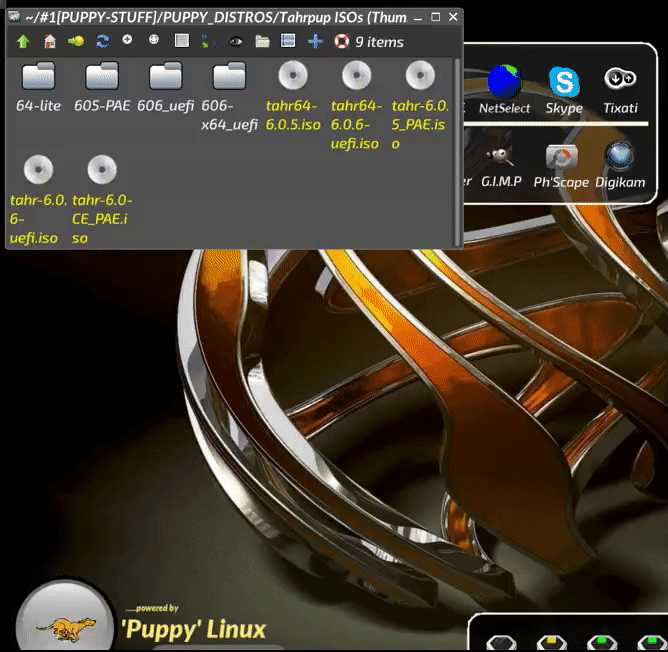The thing is, not all drives have the exact same abilities, to perform read/write processes.
What built in controller, the drive has, and it's abilities.
So, hard to say 100%, all drives work exactly like this.
sure, they can all read/write, but exactly how does the drive do it.
Think on this.
If you have the iso on the same partition as the one you want to install the files on.
Everything is being done on that single partition and drive at the same time.
Got to read from it, and write to it.
Can only do one thing at a time.
So the reads have to be stored in memory and when it stops having to read, then it can do writes.
Also, a ISO is not actually accessed like a directory or folder. It is mounted or unmounted.
Example:

- Screenshot(1).jpg (25.18 KiB) Viewed 1782 times
.
I wonder if you released the iso and unmounted it ,when you completed copying the files from it?
That can affect being able to do a clean unmount of the USB drive, when you shutdown the computer.
Luckily, Puppy shutdown or reboot process, is suppose to handle properly unmounting all drives, before completely power off computer.
.
If the iso is in a different location, a different drive is even better.
In fact, having the read data, on one drive, and the write location, on a different drive, always works best.
You can read and write at the same time.
No conflict on drive read write process.
The programs specifically for doing USB live installs.
Also have code to run checks on the drive for proper setup.
That when complete, it did make a working live install.
Most, by default, want the drive partition format to be fat32.
Why?
Because USB drives are already that format, by the manufacture, and all computers, have no problems, with fat32 format.
Some computers, only see a drive partition formatted fat32, as a proper boot partition, if containing a boot loader, to use to boot the computer.
I have a computer this affects. (has latest UEFI firmware)
If the usb has one partition, formatted fat32, a Live Puppy install, it has no problem booting.
If the partition is formatted a ext 2, 3, or 4 format, flagged boot, and has a Live Puppy install (same Puppy files).
The drive is not seen by the computer, as a boot-able device.
But, I can make a small first partition, formatted fat32, flagged boot, with bootloader files on this partition.
A second partition (any format), with the live Puppy install or a frugal install.
This setup boots with no problem.
